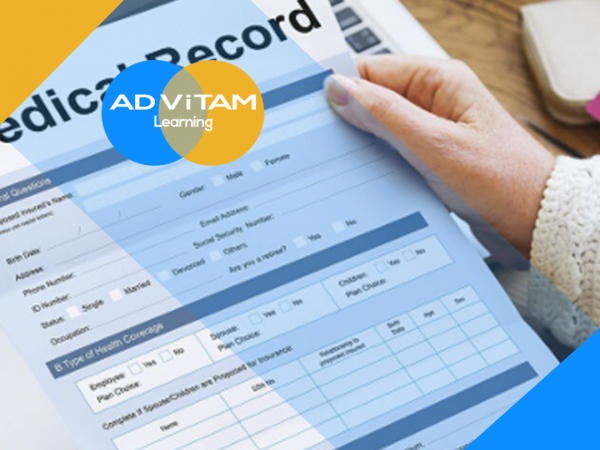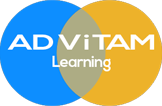Description
Anaphylaxis Training for Nurseries, Schools & Early Years – Level 2 – Online CPD Accredited Course – Level 2 – Resuscitation Council (UK) Compliant
Welcome to our online anaphylaxis for nurseries and early years, sports clubs, healthcare and social care providers. Our online anaphylaxis training courses are developed in line with the latest UK legislation and meet the requirements set out by the Resuscitation Council (UK), OFSTED, National Health Service (NHS), Skills for Health’s UK Core Skills Training Framework (CSTF), the Care Quality Commission (CQC), Skills for Care, UK Health and Safety Executive and other professional and regulatory bodies.
Why is anaphylaxis for nurseries and early years training important?
Every nursery, school or early years setting is likely to have at least one pupil who is severely allergic to a type of food, and many schools will have more. It is essential that all teachers, nursery staff and others who work with children have appropriate training to enable them to recognise and manage severe allergic reactions in schools and community settings.
How to access your anaphylaxis for nurseries and early years course
- Pay for your courses (All major debit and credit cards accepted)
- Once you have registered you will receive your login details within a few minutes
- You will then be able to reset your password, log in and take your selected online course (s)
- On completion, you will be asked to complete an end of course assessment (minimum 80% to pass)
- You can immediately download, save or print your CPD Accredited Certificate
- Let us know what you think of your online course, leave us a review!
Course aims and objectives
The aims and objectives of this anaphylaxis training for nurseries, schools and early years course are to:
- To provide the learner with a clear understanding of the legislation regarding anaphylaxis for schools, early years and other community settings
- To provide essential paediatric anaphylaxis management training resources in an engaging and meaningful way
- To provide a FREE blended learning environment that is available to all individuals and businesses
What is covered in this online anaphylaxis for nurseries and early years course?
This anaphylaxis for nurseries and early years course covers the following:
- Definition of anaphylaxis
- Be aware of the signs and symptoms of anaphylaxis in children
- Have an awareness of who is affected by anaphylaxis?
- Be aware of the causes and triggers of anaphylactic reactions in children
- Be able to diagnose anaphylaxis in children and early years
- Be able to treat a child who has an anaphylactic reaction
- Be able to provide emergency treatment of anaphylactic reactions in children and early years
- Be able to safely use an adrenaline auto-injector
- Be able to put a child into a recovery position
Who is the online anaphylaxis for nurseries and early yea course for?
This anaphylaxis for nurseries and early years e-learning course should be completed by those who work in health and social care services including:
- NHS medical, nursing, AHP and care staff
- Locum doctors and nurses
- Locum allied health professionals (AHPs)
- Agency nurses
- Agency workers
- Healthcare assistants
- Support workers
- Care assistants
- Nursery staff
- Teachers and teaching staff
- Community services
Our online anaphylaxis for nurseries and early years course should be completed by all teachers, nursery staff, healthcare and social care staff. This includes voluntary staff and unpaid working in schools, nurseries, community and sports clubs, NHS and private hospitals. Locum doctors, locum allied health professionals, agency nurses and healthcare assistants who work with children can also complete these e-learning courses.
These anaphylaxis for nurseries and early years are also relevant for health and social care support workers, including those who work for children’s care homes, residential care homes and charities.
Requirements for this Anaphylaxis for Nurseries & Early Years – Level 2 Course
To complete this anaphylaxis for nurseries and early years course, you will need access to a computer device, e.g., desktop, laptop, tablet or smartphone device
Career Path for Anaphylaxis for Nurseries & Early Years – Level 2 Course
Our anaphylaxis for nurseries and early years training are suitable for:
- Those who are looking to improve their knowledge of the subject area
- Those whose jobs require periodic continuing professional development (CPD)
- Those who need to show evidence as part of their professional registration requirements, e.g., doctors, nurses and allied health professionals
Assessment and certification
At the end of this paediatric anaphylaxis e-learning course, learners will be required to complete an online assessment. On successful completion of the knowledge test (80% pass mark), learners will be able to download a FREE CPD certificate that is valid for one year.
Course accreditation
The content of this online anaphylaxis for nurseries and early years course has been independently certified as conforming to universally accepted Continuous Professional Development (CPD) guidelines.
Payment and additional information
After adding your anaphylaxis training for nurseries, schools and early years to the shopping cart (by selecting Add to Cart), you will be able to make a secure payment using all major credit and debit cards.
Once you have purchased your anaphylaxis online training course (s) for nurseries, schools and early years, you will be sent a confirmation e-mail. You will then receive a link and login details to access your e-learning course (s) within a few minutes of purchase
What is anaphylaxis?
Anaphylaxis is a serious allergic reaction that is rapid in onset and may cause death.
For many children, the symptoms of allergy are mild. However, occasionally the symptoms are severe and they may even be life-threatening. The common causes of severe allergic reactions (anaphylaxis) include foods such as peanuts, tree nuts, milk, eggs, shellfish, fish, sesame seeds and kiwi fruit, although many other foods have been known to trigger anaphylaxis. Peanut allergy is particularly common – with one in 70 children nationwide thought to be affected.
Non-food causes of anaphylaxis include wasp or bee stings, natural latex (rubber) and certain drugs such as penicillin.
The good news is that even the most severe form of allergy is manageable. The vast majority of the children affected are happily accommodated in mainstream schools thanks to good communication between parents, school staff, doctors and education authorities. With sound precautionary measures and support from the staff, school life may continue as normal for all concerned.
What are the signs and symptoms of anaphylactic shock?
- suddenly feeling too warm
- skin reactions such as itchy skin, hives, flushed skin, or pale skin
- shortness of breath
- throat, lips or tongue swelling
- feeling like you have a lump in your throat or difficulty swallowing
- nausea, vomiting, or diarrhea
- abdominal pain
- a weak and rapid pulse
- lightheadedness, dizziness and drop in blood pressure
- runny nose and sneezing.
What are the most common causes of anaphylaxis?
- Foods such as peanuts, nuts, fish and shellfish
- Certain medications, including antibiotics, aspirin and other over-the-counter pain relievers, and the intravenous (IV) contrast used in some imaging tests
- Stings from bees, yellow jackets, wasps, hornets and fire ants
- Latex.
What is Epipen training?
Can an EpiPen stop an asthma attack?
In the event of an emergency (where the child may be experiencing an asthma attack or severe allergic reaction), use EpiPen ® first (or other adrenaline/epinephrine injections such as Jext or Emerade). After using the epinephrine injection, follow medical instructions for controlling asthma.
What is the Skills for Health’ UK ‘Core Skills Training Framework’ (CSTF)?
There is increasing recognition that there are wide variations in the quality and consistency of healthcare training provided across the UK. To minimise these challenges, LearnPac Systems works with various UK health and social care organisations to develop statutory and mandatory training courses in line with Skills for Health’s UK Core Skills Training Framework (CSTF). This includes mandatory training courses in the Skills for Health’s UK Core Skills Training Framework – CSTF Statutory Mandatory Training Subject Guide Version 1.3, Skills for Health Clinical Care UK Core Skills Training Framework Subject Guide April 2015 and other awareness courses for health and social care workers.
This online anaphylaxis for nurseries and early years course was developed in line with the CSTF learning outcomes.
Why choose our accredited e-learning courses?
The benefits of using our accredited e-learning courses in the workplace include:
- National Skills Academy for Health national delivery partner
- UK accredited e-learning provider
- An approved UK training centre
- Ofqual accredited qualifications
- Nationally recognised CPD certificates
- Free blended learning environment to support existing training
- Access your online training immediately
- Highly interactive e-learning portal
- Substantial cost reductions (no travel fees & other expenses)
- Embrace the benefits of eLearning for healthcare providers
- Significant man hour reductions
- Online training only takes as long as the learners needs
- Low carbon footprint through e-learning
- Over 200 online CPD courses
- Repository of online learning materials and assessment
- Fully qualified and experienced trainers, instructors and assessors
- Subject matter experts and content developers
- Convert your existing classroom courses to e-learning courses
- All training courses based on the latest guidance and best practice






